“What was done instead was to de-emphasize the martial pedigree of aikido’s techniques, and eschew practice conditions that led to the cultivation of a strong martial spirit.”

Revival of aikido after World War II
The typical aikido practitioner — this also includes many instructors — has only the vaguest of notions how the art planted roots in Japan and abroad following World War II. This is not due to a lack of availability of information on the subject. It is possible to study about the events of this period, but the necessary information is scattered among multiple sources, which require a reading ability in Japanese, English, and other European languages.
Certainly, the Internet has facilitated this task, but it is still difficult to gain a basic perspective of how aikido reemerged, first in Japan, and then abroad, after the cataclysmic events of the Great Pacific War. There is little incentive for scholars to do the necessary research because only a relatively small number of people are interested in such historical matters pertaining to aikido.
Who were the Prime Movers?
It is a fairly simple matter to identify the main persons responsible for aikido’s emergence as a modern Japanese martial art since so few people were involved in the art’s early years. Here is my list: Kisshomaru Ueshiba, Koichi Tohei, Gozo Shioda, and Kenji Tomiki. These names will be immediately recognizable to most experienced aikido practitioners. There are others who played roles of varying importance, but these four figures stand out as the key figures that shaped postwar aikido. Among the four, Kisshomaru Ueshiba and Koichi Tohei were far and away the most influential during the 1950s through the early 1970s. Yet neither of the two had an extensive background in martial arts prior to stepping into their leadership roles within the Aikikai.
Because it is critical to my thesis here, let me touch upon the martial arts antecedents of each of these four individuals in turn:
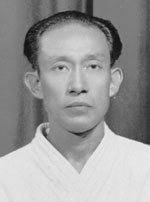
Kisshomaru Ueshiba (1921-1999): Of frail constitution as a child, Kisshomaru Ueshiba, son of Founder Morihei Ueshiba, studied kendo as a boy. He began practicing Aiki Budo regularly with his father following the departure of his brother-in-law Kiyoshi Nakakura from the Ueshiba family around 1937-38. Early evidence that Kisshomaru was being groomed as the Founder’s successor is the fact that the younger Ueshiba appears in the 1938 “Budo” book as one of Morihei’s uke. By this time, the core of talented uchideshi of the prewar period had left the Kobukan Dojo mainly related to the mobilization of Japan. Kisshomaru was one of the few young men remaining at the Kobukan Dojo. Others were Gozo Shioda and Zenzaburo Akazawa.
A mere five years later, Kisshomaru became responsible for his father’s dojo when Morihei retired to Iwama late in 1942. During and after the war, Kisshomaru’s aikido training was irregular because of the extreme conditions in Japan that were unfavorable for martial arts practice. He was employed during the day at a securities company in Tokyo and trained and taught part time in aikido as his schedule allowed. For the first few years, he lived in Iwama and commuted to Tokyo, but later moved back to the Ueshiba home in Shinjuku attached to the old Aikikai dojo to oversee dojo affairs and shorten the commute to work. During this time, several bombed-out families were living in the dojo.
In 1955, since the Aikikai Hombu Dojo was reviving, Kisshomaru quit his job and began devoting full-time to instruction and management of the dojo. His total combined time of training under his father in the prewar and postwar eras can be estimated at 7-8 years. From 1955 forward until the Founder’s death in 1969, Kisshomaru was kept busy with his teaching schedule and management responsibilities, and so calculation of his total years training under his father is at best an estimate.

Koichi Tohei (1920-2011): Tohei began judo as a boy and continued training up to his university days having attained a dan grade level. Starting in 1939 while a student at Keio University, Tohei entered the Ueshiba Dojo and learned from Morihei for a period of about 18 months before entering the Imperial Japanese Army. After his repatriation at the end of the war, Tohei returned to his family home in Tochigi Preference and launched a business venture that proved unsuccessful. He found time to travel periodically to Iwama for additional training under Ueshiba during the late 1940s. Tohei would eventually begin spending more time in Tokyo starting in the early 1950s prior to his departure for Hawaii in 1953. We can estimate his time of study under Ueshiba as three to four years including his wartime studies and training in Iwama and Tokyo. Tohei himself stated that he learned under the Founder for only about two years.
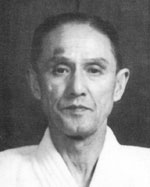
Gozo Shioda (1915-1994): Shioda enrolled in Morihei’s Kobukan Dojo in 1932 after having studied judo and kendo. He continued his training at the Kobukan Dojo during the height of its activity continuing for about eight years, part of which he spent as a live-in student. His training partners included many of the most famous students of Morihei Ueshiba from the prewar period. Although Shioda did not enter the military, he served during the war in a civilian capacity on various assignments in China and Southeast Asia. Following the war, Shioda spent one month of intensive practice in Iwama with Morihei in 1946. As Shioda lived in Tokyo, he had sporadic contact with Ueshiba thereafter during visits to Iwama, a train ride of about two hours from Tokyo station. Shioda was among the first to begin actively teaching aikido after the war in Tokyo, and would soon establish his own school called Yoshinkan Aikido. A liberal estimate of Shioda’s total time studying under Ueshiba would be approximately nine years.
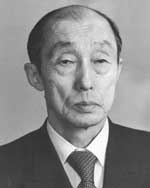
Kenji Tomiki (1900-1979): Tomiki learned judo as a boy continuing his practice while a student at Waseda University, save for an interrupting of four years due to illness. A large man by Japanese standards, he was a top-level competitor of 5th dan level during the late 1920s and even competed before the Emperor in the 1929 Tenranjiai tournament. Tomiki was heavily influenced by the views of Judo Founder Jigoro Kano with whom he enjoyed a close relationship. Tomiki started learning Daito-ryu Aikijujutsu under Morihei Ueshiba in 1926. He trained under Ueshiba in Tokyo on and off while he worked as a school teacher in Akita prefecture. In 1936, Tomiki relocated to Japanese-controlled Manchuria where he was employed as a martial arts instructor thanks to his connections with Morihei Ueshiba. Tomiki was awarded an 8th dan from Ueshiba in 1940. Tomiki’s total time of study under Ueshiba amounted to perhaps 8-10 years.
Leaving behind Morihei’s legacy

Gozo Shioda was the first to begin teaching aikido publicly due to his work of providing security arrangements at various company facilities during the “Red Purge” period of the early 1950s. The Aikikai was still struggling with low class attendance and the continued presence of the war-displaced families living in the dojo. A landmark event took place in 1954 when a public martial arts demonstration sponsored by the the “Life Extension Association” attracted some 15,000 spectators. Shioda’s dynamic demonstration attracted the attention of several wealthy patrons and soon plans were being made to build a dojo for his activities. In 1955, the first Yoshinkan Aikido dojo was inaugurated and served as the base for the propagation of this style of aikido in companies and police departments. An interesting side note is that a handful of American servicemen were among the early adopters of Yoshinkan Aikido and brought the art back to the USA starting in the mid-1950s.
Shioda remained on good terms with the Aikikai, but saw Morihei infrequently. He felt that Ueshiba was retired in Iwama and that it was incumbent on him and the younger generation of Morihei’s students to disseminate the art to the general public.
Tomiki’s repatriation to Japan was delayed until 1948. By the following year, he had become a professor at his alma mater, Waseda University, and director of the judo club in the physical education department. His activities were centered at the university although he taught at the Aikikai occasionally during the early 1950s. In 1958, Tomiki earned the ire of Morihei and the Aikikai leaders by introducing a competitive form of the art at Waseda University, something anathema to O-Sensei’s most deeply held principles. He could have muted criticism of his action had he abandoned the use of the name “aikido,” but chose instead to keep it. From that moment forward, Tomiki became unwelcome at the Aikikai.
For Tomiki’s part, though he had profound respect for Ueshiba as a martial artist, he thought that Morihei’s teaching methods were antiquated and unscientific. He much preferred his mentor Jigoro Kano’s approach to teaching the martial arts and felt that competition was an important tool being a means of testing one’s true progress against an uncooperative opponent.
Kisshomaru’s situation was extremely complex. As the Founder’s son, he was expected to carry on in his father’s footsteps and manage the course of the development of aikido. In terms of martial ability, he was inexperienced and his temperament such that he rejected a rigorous training model in favor of gentler forms of practice that more closely resembled a cardiovascular exercise system. Simlarly, he refrained from using esoteric language in expressing his vision of the art. Moreover, he edited the writings and speeches published in his father’s name eliminating unfamiliar religious references. Kisshomaru regarded these actions as a reform and improvement of aikido making the art more suitable for postwar Japanese society, and thus easier to spread aikido internationally.

Koichi Tohei was blunt in his criticism of Morihei Ueshiba. He clearly stated in published interviews that the main thing he learned from his aikido training under the Founder was the importance of “relaxation”. Tohei developed his ki-based methods incorporating elements of Tempu Nakamura’s health system and meditative practices of the Ichikukai. He created what was actually a hybrid system combining basic aikido techniques absent a martial emphasis with additional practices culled from his outside studies. Tohei, too, felt that Morihei’s mystical explanations of aikido replete with incomprehensible metaphors and rambling speech would retard the future growth of the art.
From the above remarks, it should be clear that all four of these key figures dismissed some parts of Morihei’s aikido legacy. Kisshomaru and Tohei, especially, abandoned the Founder’s martial techniques, budo theory, and teaching methodology. All of them concluded that Morihei’s arcane language and explanations of aikido’s key concepts were inappropriate for modern times. However, except for Tohei, all were careful to couch their criticisms of Morihei in diplomatic terms while displaying outward respect.
At this point, I would like to focus attention on the actions of Kisshomaru and Tohei in the 1950s and 1960s. The reason for this is that these two formed the backbone of the Aikikai organization to which the lion’s share of aikido practitioners worldwide owe allegiance even today.
In previous articles, I have advanced the thesis that Morihei’s presence and participation in the activities of the Aikikai during this period were limited and irregular, and that he did not play a role in the management of the dojo or organization. Abundant historical evidence exists to support this view. For many years, Kisshomaru and Tohei acted as a team. Married to sisters and thus sharing a blood bond, both had their followings within the Aikikai and exerted controlling influence on the key decisions taken by the headquarters.
Aikido shifts gears in tenor with the times
Kisshomaru, starting in the late 1950s, and Tohei in the early 1960s, began publishing a continuous stream of books on aikido, mostly of a technical nature. These early publications set the de facto standard for aikido pedagogy on which the Aikikai curriculum was based. The young instructors dispatched from the Aikikai to numerous parts of the world spread these same techniques and teaching methods abroad. Other senior instructors within the Aikikai of course had some influence, but none of them could rival Kisshomaru and Tohei in importance or visibility.
What were Kisshomaru’s and Tohei’s training methods? Both styles of training had warmups, some of which overlapped, that included exercises inherited from Morihei. There was a core of some 50 empty-handed aikido techniques that were most commonly practiced and that were used for testing purposes. Most of the techniques were practiced in a flowing manner, and nage would seldom perform techniques from a static grab. Although sometimes mentioned in passing, practices commonly used in martial arts such as atemi and kiai fell out of favor in the Aikikai system, and were discouraged in training. The fact of the matter was that any practitioners who attempted to employ strong atemi or kiai would be scolded, or even asked to leave the dojo.
I practiced in both systems from 1963 forward and have first-hand knowledge of the training conditions that prevailed in those days. Attacks tended to be slow, sloppy and lacking in commitment. Seniors would sometimes resist juniors, which was easy to do because of uncommitted attacks. The success of the application of some techniques depended entirely on this sort of careless interaction between uke and nage. Sudden, strong attacks perceived as challenges would evoke an angry reaction in nage who would usually resort to physical strength in an attempt to force a technique to work.
The use of weapons — tanto, ken and jo — was minimal. Various weapons defenses were sometimes taught in preparation for dan testing. Since few people had training in the use of weapons, attacks were slow and weak and poorly executed.
One might be led to believe that training was not vigorous. On the contrary, it could be very exhausting, especially in Kisshomaru’s style. However, the severity of training in such situations was due to the cardiovascular demands placed on the body due to the non-stop movement, and endless falling and standing up during practice. I found it particularly difficult to train this way in hot and humid practice conditions.
For the most part, dojo training did not stress martial integrity in technique. In fact, an attempt to display such a budo mindset during practice would have been met with resistance and derided as “contrary to aikido principles.” The lack of atemi, kiai and weapons training I allude to above is evidence of this state of affairs. Film footage has survived of both Kisshomaru and Tohei’s teaching methods that readers can view to draw their own conclusions.
The use of the parallel training methods of Kisshomaru and Tohei within the Aikikai and affiliated schools came to an abrupt end in May 1974 when Tohei resigned from the headquarters school. I have written extensively about this pivotal event elsewhere for those wishing to learn about this important episode in aikido history.
Kisshomaru’s aikido becomes the Aikikai standard
Kisshomaru’s methods were quickly adopted as the standard for instruction at the Hombu Dojo following Tohei’s departure, although the Aikikai senior instructors continued teaching as they had previously. Kisshomaru’s son, the present Doshu Moriteru Ueshiba, was groomed under his father’s tutelage, as were the junior instructors who joined the Aikikai in this period. With little modification, Kisshomaru’s system continues today as the official Aikikai curriculum.
This, in a nutshell, is a description of the beginnings of aikido in postwar Japan. Many have faulted Kisshomaru, Tohei, and other teachers of this era for propagating subpar technical standards that have made aikido into a caricature of a martial art. Such comments are common among critics of aikido from other martial arts, and can be heard even within the aikido community. Of course, the whole debate is subjective in nature, and opinions can be found across a broad spectrum.
In fairness, one must remember the circumstances in which aikido took its first, tentative steps in Japan and began to be exported to foreign lands. Japanese society rejected the militaristic spirit and radical nationalism that propelled the nation into a suicidal war. Therefore, anything associated with prewar nationalism and militarism, which of course included martial arts, was met with broad societal disapproval.
Morihei’s students who revived the art after the war had to keep a low profile, and deal with rampant poverty, occupation forces, and negative public opinion. This was true of all martial arts. One of the ways some arts attempted to overcome these limiting circumstances was to emphasize or introduce a competitive component. It could then be claimed that these arts had become sports, and were therefore not destined to be used for war propaganda as was the case prior to and during the war.
Given the art’s core principles as set forth by Morihei, the introduction of competition was of course not an option in the case of aikido. What was done instead within the Aikikai system was to de-emphasize the martial pedigree of aikido’s techniques, and eschew practice conditions that led to the cultivation of a strong martial spirit. Some 60 years later, a large number of practitioners within the Aikikai system are still being formed using this teaching approach, which is not martial in nature and does not reflect the vision of aikido conceived by the art’s founder, Morihei Ueshiba O-Sensei.
In my next article which will build upon the above historical background, I will discuss aspects of Morihei Ueshiba’s aikido as taught in Iwama to a small number of people in the years immediately following the war. The most significant of Morihei’s students from that era was Morihiro Saito. Saito assisted Morihei in his daily life and received a great deal of private instruction from the Founder for more than 20 years. He was also the person most knowledgeable of Ueshiba’s Aiki Ken and Aiki Jo training methods. It was Saito who organized Morihei’s Iwama curriculum, including both empty-handed and weapons techniques, and presented this vast body of material in published form starting in the mid-1970s. The Iwama Aikido system taught by Saito Sensei offered an alternative to the Aikikai syllabus and steadily gained acceptance, particularly abroad, from that time forward.
Stanley Pranin
* This article was originally published as Towards A Reform of Aikido Technique (1): Background in 2012

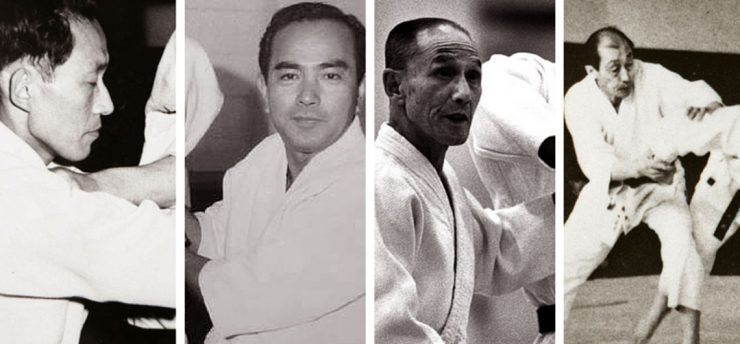




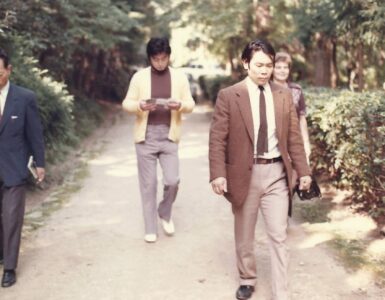







Hi Stan,
A very enlightening article. I have thought for years it was the influence of the hippies in Aikido that had softened it up. This shows me that Kisshomaru was the main cause that has us continually apologizing that the main line is often ineffective. I am so glad that I lucked into the Iwama and Nishio Styles.
I went to the Hombu dojo one day. I stood in the outer foyer and thought about the people from the Hombu Dojo that I had practiced with around the Tokyo and Yokohama areas. I thought the students are an indication of the quality of the instructor. Why should I practice in a place that turns out so many inferior students compared with the people I had the privilege of practicing with so often? I turned around and walked out and never went back.
Thanks,
Tom Huffman
Sadly whilst accurate this article illustrates its own point by maintaining a very american/pacific-centric treatment.
Where though is the mention of the pioneers in Europe who evaded the Kisshomaru/Tohei perspective? (Though Tohei had his U.K. influence later, which continues to this day).
Say the hugely relevant and great judoka champion Kenshiro Abbe, ten years a student with O’sensei who introduced Aikido in to UK in 1955 at ‘The Hut’ dojo ( Along indeed with Kendo , Iaido, Yarido and Naginatado.) Then following of Mutsuro Nakazono sensei and of course the incomparable Masamichi Noro to name Just a few. Even earlier in Belgium you had Tadashi Abbe and Minoru Mochizuki then Kobayashi Hirokazu. All great names and worthy of recognition here, teaching highly martial aikido learned directly from O’sensei in the early years. If i have missed out other names I apologize.
These were the real heroes of aikido I might suggest, alone, in foreign countries introducing the art to an entire continent whilst the politics Stan reflects on went on in Japan. Kenshiro Abbe in his van traveling Europe with 15 mats teaching anybody who was interested. His organisation the International Budo Council still stands today. Indeed one of my Belgium teachers Roger Hannoset sensei of the Budo college Belge, founded in 1951, now well in his 80’s goes back to the beginning.
We are still out here carrying on their approach and appreciating their lineage and martiality fear not! 🙂
Some time in the middle 1960s when we were practicing in a tin roofed quonset hut in the back of a church property my father printed up a bunch of flyers to attract people to Aikido. Aikido then was not a business venture. I think the Dues were $4.00 initiation and $3.00 per month. At the end of the year we would have a party and then most of the money was spent. There were no salaries. The ads work on the local level and we started kids classes, intermediate and adult classes. That was when I began to teach. It is funny to think back, but many of the students that started with Glanstein Sensei after talking to them and introducing them in Aiki philosophy it would me job to teach them basics. There will always be a curve where Aikido is not for everyone. But it isn’t that Aikido is “not for everyone” rather Aikido is there for everyone. This is a most important point in discussing comparative martial arts. Aikido is not an art for comparison. It is unique unto itself. If you want to know Aikido then you have to learn the basics that were base to Aikido. Without the philosophy behind Aikido then you are lacking the inner beauty of the Martial Art of Aikido. This would be a shame.
If a person is looking for a quick defense to an attack in the next day, week, or year, then carrying a big stick may a better option. But if you want to never have to worry about carrying a big stick then the time spent learning Aikido will be well worth the effort.
[…] involvement with the Oomoto-kyo cult that sprang up in the the last decade of the 1800s. The post World War II version of Aikido teaches a variety of techniques considered to be diluted compared to the pre-war incarnation, and require a complying partner in order to perform. It is […]
[…] involvement with the Oomoto-kyo cult that sprang up in the the last decade of the 1800s. The post World War II version of Aikido teaches a variety of techniques considered to be diluted compared to the pre-war incarnation, and require a complying partner in order to perform. It is […]
to eliminate the kiai and to reduce the use of atami is GREAT. THANK YOU KISSHOMARU.
years before i started aikido, i did karate for half a year. the constant kiai’s were a big put off.
as for the atemis, sometimes its good, and educational, to show and train with atemi. it defenitely is core of aikido training.
but….all the time atemis and all the time those full energy atemis, it just messes up the aikido training.
Kisshomaru did really well in further developing aikido. and, not sure why people say the budo spirit is lost, i dont feel it like that.
i think aikido perfectly captures the true budo spirit.